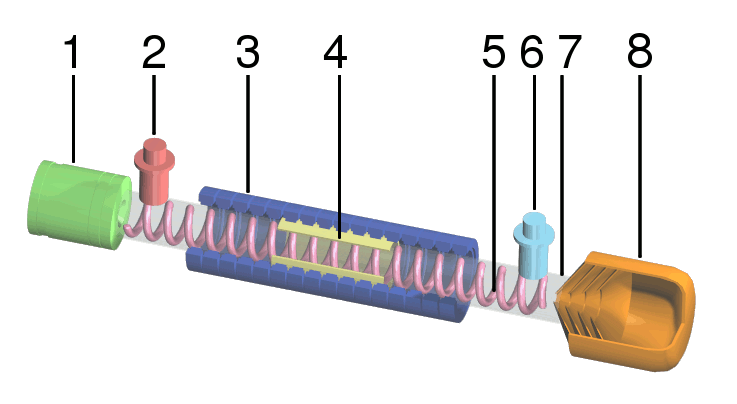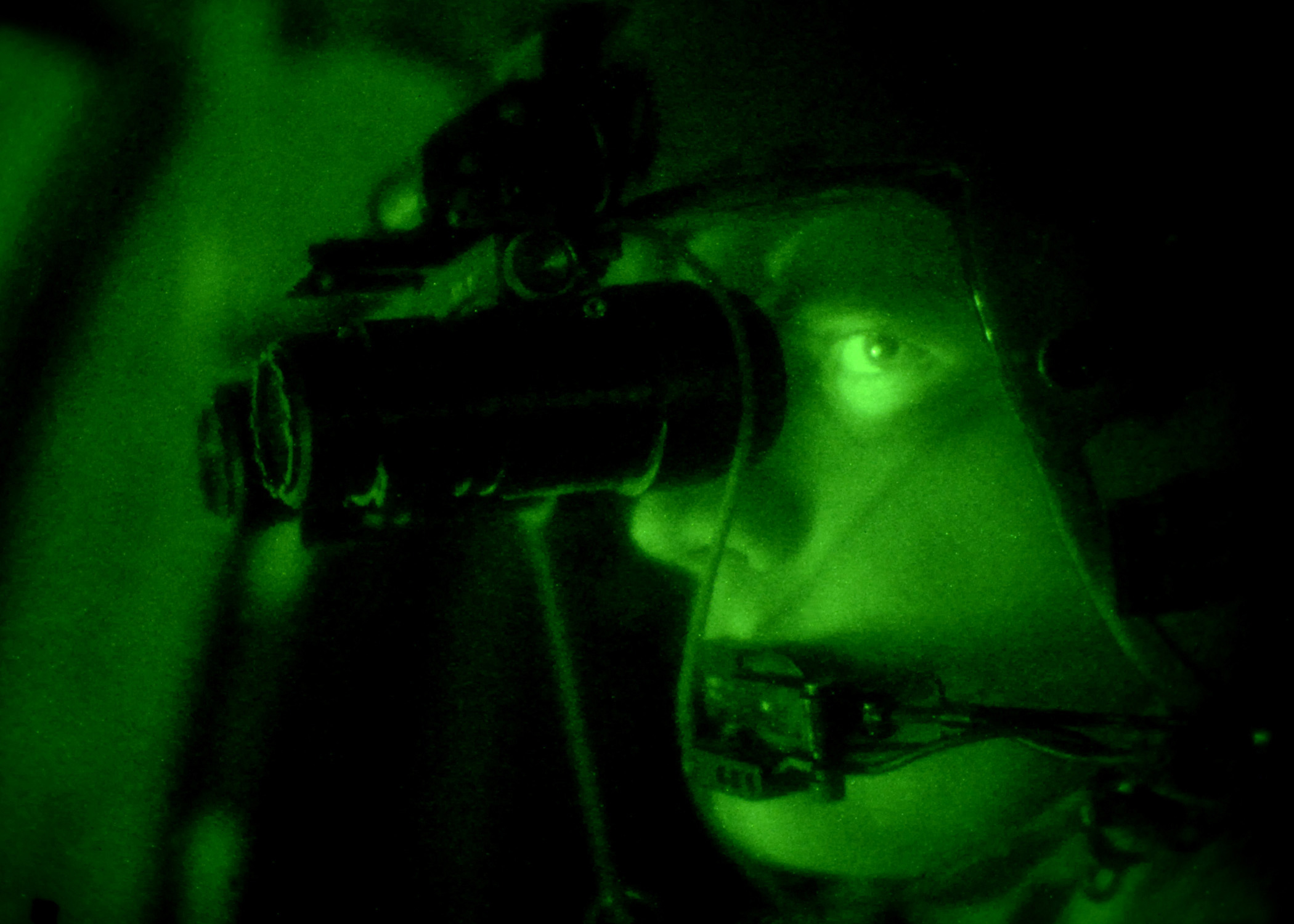|
RMA Tube Designation
In the years 1942-1944, the Radio Manufacturers Association used a descriptive nomenclature system for industrial, transmitting, and special-purpose vacuum tubes. The numbering scheme was distinct from both the numbering schemes used for standard receiving tubes, and the existing transmitting tube numbering systems used previously, such as the "800 series" numbers originated by RCA and adopted by many others. The system assigned numbers with the base form "1A21", and this numbering scheme is occasionally referred to by tube collectors and historians as the "1A21 system". The first digit of the type number was 1-9, providing a rough indication of the filament/heater power rating (and therefore the overall power handling capabilities) of the tube. The assigned numbers were as follows: *1-- No filament/heater, or cold cathode device *2-- Up to 10 W *3-- 10-20 W *4-- 20-50 W *5-- 50-100 W *6-- 100-200 W *7-- 200-500 W *8-- 500W-1 kW *9-- More than 1 kW The second character ... [...More Info...] [...Related Items...] OR: [Wikipedia] [Google] [Baidu] |
JEDEC
The Joint Electron Device Engineering Council (JEDEC) Solid State Technology Association is a consortium of the semiconductor industry headquartered in Arlington County, Virginia, Arlington, United States. It has over 300 members and is focused on standardization of part numbers, defining an electrostatic discharge (ESD) standard, and leadership in the RoHS, lead-free manufacturing transition. The origin of JEDEC traces back to 1944, when Radio Manufacturers Association, RMA (subsequently renamed Electronic Industries Alliance , EIA) and National Electrical Manufacturers Association, NEMA established the Joint Electron Tube Engineering Council (JETEC) to coordinate vacuum tube type list of vacuum tubes, numberings. In 1958, with the advent of semiconductor technology, the joint JETEC-activity of Electronic Industries Association, EIA and NEMA was renamed into Joint Electron Device Engineering Council. NEMA discontinued its involvement in 1979. In the fall of 1999, JEDEC became ... [...More Info...] [...Related Items...] OR: [Wikipedia] [Google] [Baidu] |
Thermionic Converter
A thermionic converter consists of a hot electrode which thermionically emits electrons over a potential energy barrier to a cooler electrode, producing a useful electric power output. Caesium vapor is used to optimize the electrode work functions and provide an ion supply (by surface ionization or electron impact ionization in a plasma) to neutralize the electron space charge. Definition From a physical electronic viewpoint, thermionic energy conversion is the direct production of electric power from heat by thermionic electron emission. From a thermodynamic viewpoint, it is the use of electron vapor as the working fluid in a power-producing cycle. A thermionic converter consists of a hot emitter electrode from which electrons are vaporized by thermionic emission and a colder collector electrode into which they are condensed after conduction through the inter-electrode plasma. The resulting current, typically several amperes per square centimeter of emitter surface, d ... [...More Info...] [...Related Items...] OR: [Wikipedia] [Google] [Baidu] |
X-ray Tube
An X-ray tube is a vacuum tube that converts electrical input power into X-rays. The availability of this controllable source of X-rays created the field of radiography, the imaging of partly opaque objects with penetrating radiation. In contrast to other sources of ionizing radiation, X-rays are only produced as long as the X-ray tube is energized. X-ray tubes are also used in CT scanners, airport luggage scanners, X-ray crystallography, material and structure analysis, and for industrial inspection. Increasing demand for high-performance computed tomography (CT) scanning and angiography systems has driven development of very high-performance medical X-ray tubes. History X-ray tubes evolved from experimental Crookes tubes with which X-rays were first discovered on November 8, 1895, by the German physicist Wilhelm Conrad Röntgen. The first-generation ''cold cathode'' or ''Crookes'' X-ray tubes were used until the 1920s. These tubes work by ionisation of residual gas within the ... [...More Info...] [...Related Items...] OR: [Wikipedia] [Google] [Baidu] |
Travelling Wave Tube
A traveling-wave tube (TWT, pronounced "twit") or traveling-wave tube amplifier (TWTA, pronounced "tweeta") is a specialized vacuum tube that is used in electronics to amplify radio frequency (RF) signals in the microwave range. It was invented by Andrei Haeff around 1933 as a graduate student at Caltech, and its present form was invented by Rudolf Kompfner in 1942–43. The TWT belongs to a category of "linear beam" tubes, such as the klystron, in which the radio wave is amplified by absorbing power from a beam of electrons as it passes down the tube. Although there are various types of TWT, two major categories are: *''Helix TWT'' - in which the radio waves interact with the electron beam while traveling down a wire helix which surrounds the beam. These have wide bandwidth, but output power is limited to a few hundred watts. *''Coupled cavity TWT'' - in which the radio wave interacts with the beam in a series of cavity resonators through which the beam passes. These functio ... [...More Info...] [...Related Items...] OR: [Wikipedia] [Google] [Baidu] |
Flash Tube
A flashtube (flashlamp) produces an electrostatic discharge with an extremely intense, Coherence (physics), incoherent, full-spectrum white light for a very short time. A flashtube is a glass tube with an electrode at each end and is filled with a gas that, when triggered, ionizes and conducts a high-voltage pulse to make light. Flashtubes are used most in photography; they also are used in science, medicine, industry, and entertainment. Construction The lamp consists of a hermetically sealed glass tube which is filled with a noble gas, usually xenon, and electrodes to carry electric current to the gas. Additionally, a high voltage power source is necessary to energize the gas as a trigger event. A charged photoflash capacitor is usually used to supply energy for the flash, so as to allow very speedy delivery of very high electrical current when the lamp is triggered. Glass envelopes The glass envelope is most commonly a thin tube, often made of fused quartz, borosilicate or P ... [...More Info...] [...Related Items...] OR: [Wikipedia] [Google] [Baidu] |
Beam Deflection Tube
Beam deflection tubes, sometimes known as sheet beam tubes, are vacuum tubes with an electron gun, a beam intensity control grid, a screen grid, sometimes a suppressor grid, and two electrostatic deflection electrodes on opposite sides of the electron beam that can direct the rectangular beam to either of two anodes in the same plane. They can be used as two-quadrant, single-balanced Frequency mixer, mixers or Modulation, (de)modulators with very linear qualities. Their mode of operation is similar to one-half of a Gilbert cell by applying an unbalanced line, unbalanced signal to the control grid and a balanced line, balanced signal to the deflection electrodes, then extracting the balanced mixing products and from the two anodes. Similar to a pentagrid converter, the cathode and the first two grids can be made into an Electronic oscillator, oscillator. Two beam deflection tubes can be combined to form a double-balanced mixer. They need extensive Electromagnetic shielding, ... [...More Info...] [...Related Items...] OR: [Wikipedia] [Google] [Baidu] |
Storage Tube
Storage tubes are a class of cathode-ray tubes (CRTs) that are designed to hold an image for a long period of time, typically as long as power is supplied to the tube. A specialized type of storage tube, the Williams tube, was used as a main memory system on a number of early computers, from the late 1940s into the early 1950s. They were replaced with other technologies, notably core memory, starting in the 1950s. In a new form, the bistable tube, storage tubes made a comeback in the 1960s and 1970s for use in computer graphics, most notably the Tektronix 4010 series. Today they are obsolete, their functions provided by low-cost memory devices and liquid crystal displays. Operation Background A conventional CRT consists of an electron gun at the back of the tube that is aimed at a thin layer of phosphor at the front of the tube. Depending on the role, the beam of electrons emitted by the gun is steered around the display using magnetic (television) or electrostatic (oscillo ... [...More Info...] [...Related Items...] OR: [Wikipedia] [Google] [Baidu] |
Mercury Arc Rectifier
A mercury-arc valve or mercury-vapor rectifier or (UK) mercury-arc rectifier is a type of electrical rectifier used for converting high-voltage or high-Electric current, current alternating current (AC) into direct current (DC). It is a type of cold cathode gas-filled tube, but is unusual in that the cathode, instead of being solid, is made from a pool of liquid mercury (element), mercury and is therefore self-restoring. As a result mercury-arc valves, when used as intended, are far more robust and durable and can carry much higher currents than most other types of gas discharge tube. Some examples have been in continuous service, rectifying 50-ampere currents, for decades. Invented in 1902 by Peter Cooper Hewitt, mercury-arc rectifiers were used to provide power for industrial motors, railway electrification system, electric railways, Tram, streetcars, and electric locomotives, as well as for radio transmitters and for high-voltage direct current (HVDC) power transmission. They w ... [...More Info...] [...Related Items...] OR: [Wikipedia] [Google] [Baidu] |
Ignitron
An ignitron is a type of gas-filled tube used as a controlled rectifier and dating from the 1930s. Invented by Joseph Slepian while employed by Westinghouse Electric Corporation, Westinghouse, Westinghouse was the original manufacturer and owned trademark rights to the name "Ignitron". Ignitrons are closely related to mercury-arc valves but differ in the way the arc is ignited. They function similarly to thyratrons; a triggering pulse to the igniter electrode turns the device "on", allowing a high current to flow between the cathode and anode electrodes. After it is turned on, the current through the anode must be reduced to zero to restore the device to its nonconducting state. They are used to switch high currents in heavy industrial applications. Construction and operation An ignitron is usually a large steel container with a pool of mercury (element), mercury in the bottom that acts as a cathode during operation. A large graphite or refractory metals, refractory metal cylind ... [...More Info...] [...Related Items...] OR: [Wikipedia] [Google] [Baidu] |
Night Vision Device
A night-vision device (NVD), also known as a night optical/observation device (NOD) or night-vision goggle (NVG), is an optoelectronic device that allows visualization of images in low levels of light, improving the user's night vision. The device enhances ambient visible light and converts near-infrared light into visible light which can then be seen by humans; this is known as I2 ( image intensification). By comparison, viewing of infrared thermal radiation is referred to as thermal imaging and operates in a different section of the infrared spectrum. A night vision device usually consists of an image intensifier tube, a protective housing, and an optional mounting system. Many NVDs also include a protective sacrificial lens, mounted over the front/ objective lens to prevent damage by environmental hazards, while some incorporate telescopic lens ... [...More Info...] [...Related Items...] OR: [Wikipedia] [Google] [Baidu] |
Video Camera Tube
Video camera tubes are devices based on the cathode-ray tube that were used in television cameras to capture television images, prior to the introduction of charge-coupled device (CCD) image sensors in the 1980s. Several different types of tubes were in use from the early 1930s, and as late as the 1990s. In these tubes, an cathode ray, electron beam is scanned across an image of the scene to be broadcast focused on a target. This generated a current that is dependent on the brightness of the image on the target at the scan point. The size of the striking ray is tiny compared to the size of the target, allowing 480–486 horizontal scan lines per image in the NTSC format, 576 lines in PAL, and as many as 1035 lines in Multiple sub-Nyquist sampling encoding, Hi-Vision. Cathode-ray tube Any vacuum tube which operates using a focused beam of electrons, originally called cathode rays, is known as a cathode-ray tube (CRT). These are usually seen as display devices as used in older (i. ... [...More Info...] [...Related Items...] OR: [Wikipedia] [Google] [Baidu] |







